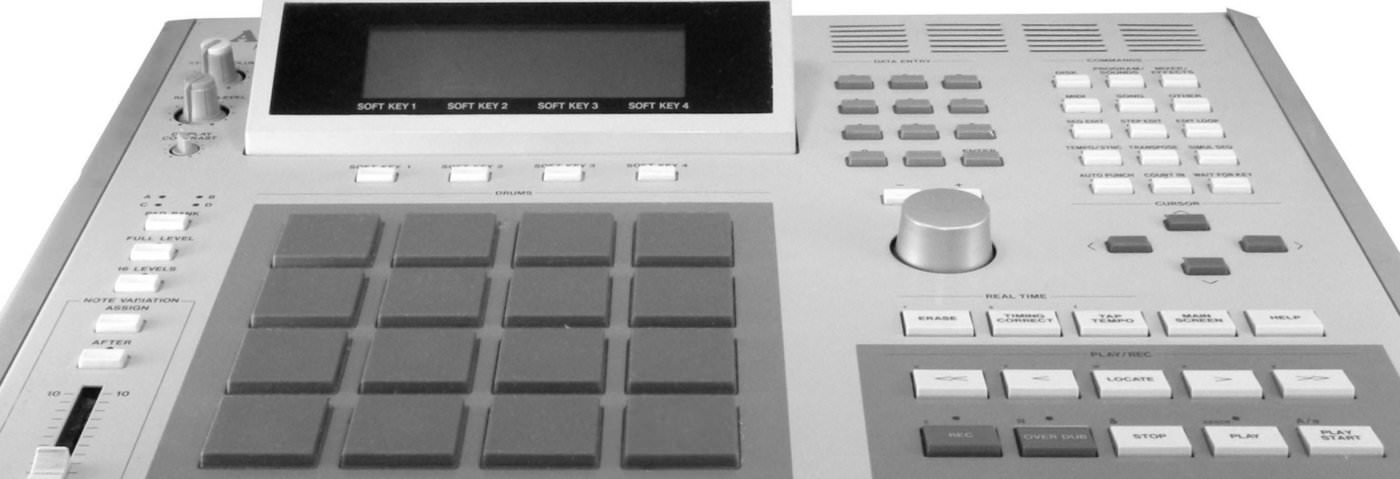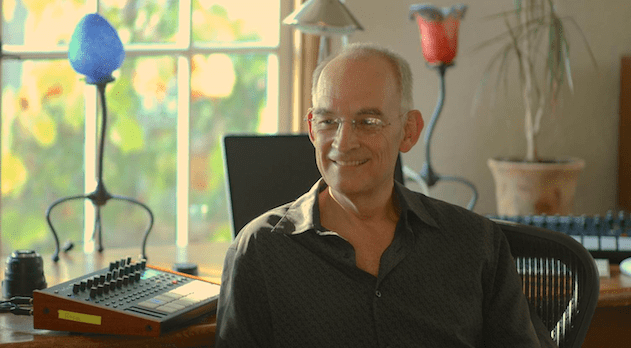

Roger Linn On Swing, Groove & The Magic Of The MPC's Timing - Attack Magazin...
source link: https://www.attackmagazine.com/features/interview/roger-linn-swing-groove-magic-mpc-timing/
Go to the source link to view the article. You can view the picture content, updated content and better typesetting reading experience. If the link is broken, please click the button below to view the snapshot at that time.


Features » Interviews »
Roger Linn On Swing, Groove & The Magic Of The MPC’s Timing
How important are a few milliseconds? When it comes to sequencers, they can mean the difference between a perfect groove and a sloppy mess. We talk to drum machine pioneer Roger Linn to discover the secrets of perfect musical timing and find out why the swing of his MPC sampler series remains so highly rated.

While researching our recent Passing Notes feature on DAW and drum machine swing, we found ourselves returning to the same few questions over and over again. Do dedicated hardware drum machines and samplers offer better timing and swing than software-based alternatives? Does swing do exactly the same thing in all DAWs and sequencers? What else contributes to the groove of a beat or loop?
Perhaps above all else, one of the main questions we found ourselves asking was why the earlier models in Akai’s MPC series of sampling workstations are still considered to be among the best around when it comes to groove and timing.
The idea of ‘MPC swing’ is so ingrained in electronic music folklore that it’s considered almost heretical to question it – especially among large chunks of the hip hop production community. But can it really be that hardware sold a quarter of a century ago is somehow better than the latest DAWs and drum software?
Eventually it struck us that there was only one person who’d be able to give us definitive answers to all our queries: Roger Linn, inventor of swing and quantisation, designer of the ground-breaking Linn sample-based drum machines, the Akai MPC60 and MPC3000 and the DSI Tempest.
Over a series of emails with Roger we discussed sequencer swing and drum machine timing, starting with the question of the MPC’s magical groove and moving on to the importance of tight timing and whether it’s better to play beats in real time than to program them with quantisation.
only one person could give us definitive answers to all our queries: the inventor of swing, quantisation, the LinnDrum, the MPC and the DSI Tempest.
Roger’s insight into sequencing, swing and timing helps shed light on some of the most commonly debated intricacies of electronic music production. Some of his answers may also come as a surprise to anyone who believes there’s something unique about the groove of the MPC.
Attack Magazine: The main idea which prompted this discussion was a conversation we had in our office about the magic of the 80s MPCs. 25 years on from the release of the MPC60, it’s still held in incredibly high regard and there’s a mystique attached to the timing. ‘MPC swing’ is the watchword for tight, funky timing. Can we start by talking about the MPCs – particularly the MPC60 and MPC3000 – and why they’re so highly revered? Are they actually measurably better in some way than other sequencers or is it a bit of an urban myth which has snowballed since the 80s?
Roger Linn: There are a few factors that have contributed to natural, human-feeling grooves in my drum machines. In order of importance:
1. Swing.
Swing – applied to quantized 16th-note beats – is a big part of it. My implementation of swing has always been very simple: I merely delay the second 16th note within each 8th note. In other words, I delay all the even-numbered 16th notes within the beat (2, 4, 6, 8, etc.) In my products I describe the swing amount in terms of the ratio of time duration between the first and second 16th notes within each 8th note. For example, 50% is no swing, meaning that both 16th notes within each 8th note are given equal timing. And 66% means perfect triplet swing, meaning that the first 16th note of each pair gets 2/3 of the time, and the second 16th note gets 1/3, so the second 16th note falls on a perfect 8th note triplet. The fun comes in the in-between settings. For example, a 90 BPM swing groove will feel looser at 62% than at a perfect swing setting of 66%. And for straight 16th-note beats (no swing), a swing setting of 54% will loosen up the feel without it sounding like swing. Between 50% and around 70% are lots of wonderful little settings that, for a particular beat and tempo, can change a rigid beat into something that makes people move. And unlike the MPCs, my new Tempest drum machine makes it very easy to find the right swing setting because you can adjust the swing knob in real time while the beat plays. I first introduced swing – as well as recording quantization – in my 1979 drum machine, the LM-1 Drum Computer.
2. Natural dynamic response on drum pads.
When a real drummer plays a great-sounding groove containing 16th-note hi-hats, he varies the loudness of each hi-hat hit in a way that he has developed over years of practice. If he were to play each note at exactly the same volume, he’d sound like a bad drum machine beat. So to create a natural-sounding 16th note hi-hat part on a drum machine, you need drum pads with accurate and natural-feeling dynamic response (something I introduced on my Linn9000 drum machine in 1984) and you need good drumming skills. If so, then when you program in a hi-hat part with good dynamics from note to note, it plays back as you intended.
3. Pressure-sensitive note repeat (also called roll).
Good pad dynamic response is important, but not everyone has the drumming skills to program a dynamic, natural-sounding 16th note hi-hat part into a drum machine in real time. This is why I introduced the pressure-sensitive ‘note repeat’ feature (sometimes called ‘roll’) in the Linn9000 and have had it in every drum machine since. The note repeat feature allows you to program repeating notes – such as 16th note hi-hats – merely by varying your finger pressure on the hi-hat pad in real time as the beat or metronome plays. At the moment of each successive 16th note, a new hi-hat note is recorded into the beat, and your finger pressure at that moment is used as the velocity level for the new note. This requires far less skill to create a natural-sounding groove. In fact, simply by varying your finger pressure from light to medium continuously and somewhat randomly, you’ll end up with a very natural-sounding hi-hat part.
4. The playback timing should be very accurate.
In my drum machines, I wrote the software in such a way that the notes play exactly at the correct timing location. And for the included drum sounds, I insured that the beginnings of the samples were closely trimmed to minimize any delay at the start. I’ve heard lots of theories over the years about other timing tricks, like introducing random timing variations into the notes of the beat, or delaying the snare on 2 and 4, but I’ve never found these to do much good. In fact, I’d suggest that if the note dynamics and swing are right, then the groove works best when the notes are played at exactly the perfect time slots.
5. You need good beats.
All the swing, dynamics and other tricks won’t do you any good unless you come up with a good beat in the first place. On all my drum machines, I’ve tried to provide factory sounds and beats that sound great and provide excellent examples of what can be done. Even on my AdrenaLinn III Guitar Processor, which includes a simple and very limited drum machine, its 190 included factory beats have very good grooves. In making these beats, I listened to hundreds of great recordings over the years and tried my best to dissect the drummers’ feels and recreate them as drum machine beats. I suggest this same approach in learning how to create great drum machine grooves.
6. I try not to let the technology get in the way of music-making.
On all my drum machines, I tried to design them to be easy to use so you could take it out of the box, turn it on and start making beats. I’ve seen some products that make you read manuals and set up all kinds of complex and unnecessary settings before you can start. By the time you’ve done this, your inspiration is usually gone and you’ve set up a mental association between the product and suffering. I think perhaps one reason people have made so many great beats on my products is that when they have the idea, they can record it into the machine right away.
That’s about it. Not much magic, just good solid engineering and creative beat-making. If some people think my products have a special magic, I take that as a high compliment. I think some people just happened to create a magical recording years ago on one of my drum machines, and in their minds my products will always be associated with great grooves. Years later if they decide to buy a new drum machine, they may see my name on the panel and think: “I can research this thoroughly or I can just buy Roger’s product because I trust that if he did it before, he’ll do it again.” Sometimes customers tell me this and it makes me feel very good.
Author Greg Scarth & Roger Linn
2nd July, 2013
Recommend
About Joyk
Aggregate valuable and interesting links.
Joyk means Joy of geeK